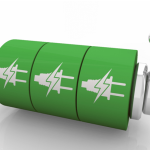The trade-in price of a car suggested by the buyers is often below the average market value of the same model. Why does it happen? What are the criteria for setting a car price? How to do research and settle the reasonable value for the vehicle? The Indy Auto Man used car dealership team explains the trade-in ins and outs.
How Does the Trade-in Program Work?
The essence of the trade-in program is simple:
- The car owner brings the old car to the dealership and chooses the one he/she is going to buy.
- The dealer evaluates the technical condition of the car and sets the price.
- The estimated value of the old car is deducted from the value of the new one.
- The customer pays the remaining amount in cash. If a car loan is issued, then the cost of the old car is counted as a down payment.
- After completing the paperwork, the customer leaves the old car and picks up the new one.
How to Find out the Trade-in Cost in Advance?
If the car owner is worried about the car evaluation procedure, it is possible to get the approximate car value in advance. This can be done in different ways:
- Find out the average market value of the car. The easiest way is to get the Kelley Blue Book trade-in offer. Car dealerships also take it into account when evaluating a vehicle.
- Get an online offer. This is the fastest and most convenient way to find out how much the car is worth.
Trade-in Benefits in Indianapolis
Dealerships, like any business, need to be profitable. The lower trade-in valuation is due to the fact that the dealer assumes all the hassle of selling the car, as well as possible risks. But even though the customer may get less for the vehicle than if selling it to a private party, there are still substantial benefits to using an old car as a trade-in in Indianapolis, such as state tax credit for a new car or reduced monthly payments.
“At Indy Auto Man, we always strive to make our trade-in offers as profitable for the customers as we can. We have specials for Synergize community members and beneficial financing terms for IMCU members. Our number one goal is the best customer experience whether you buy a car from us or not”, says Victor Figlin, the GM of Indy Auto Man.
During a trade-in deal, dealerships and customers have a typical set of figures: the trade-in value of the customer’s car and the price of the new one. And the key figure for the customer is the difference between these two values, i.e. the amount of money to be paid. And despite the trade-in evaluation will be lower than the market price of a used car, customers can expect a good discount on the car they buy.
What Are the Criteria for Evaluating a Car for Trade-in?
Assessing the car value is a standard procedure. It is carried out at the dealership for free. The car is inspected in the service area, where mechanics take into account the following parameters:
- brand and model;
- year of manufacture;
- mileage;
- the most significant characteristics, such as engine power and volume, type of gearbox, drive, etc.;
- operation history – whether the car got into accidents, how often and for what reason it get repairs;
- availability of documents (service book, original title);
- exterior (the presence of paint chips, scratches, dents, painted elements) and the results of the engine and the car chassis diagnostics.
How to Check If the Car Value Was Estimated Correctly?
It is impossible to check the correctness of the assessment, since the criteria may differ from one dealer to another. Each dealership determines the trade-in terms and conditions independently.
The only thing that can be recommended in this case is to contact several car dealerships in Indianapolis. This will help understand where the price is underestimated, and where it is set adequately. After that, it is possible to choose the most advantageous offer. For example, at Indy Auto Man, the trade-in offer is valid for seven days, so the customers have enough time to make up their mind, compare the values and return for the most beneficial deal.













